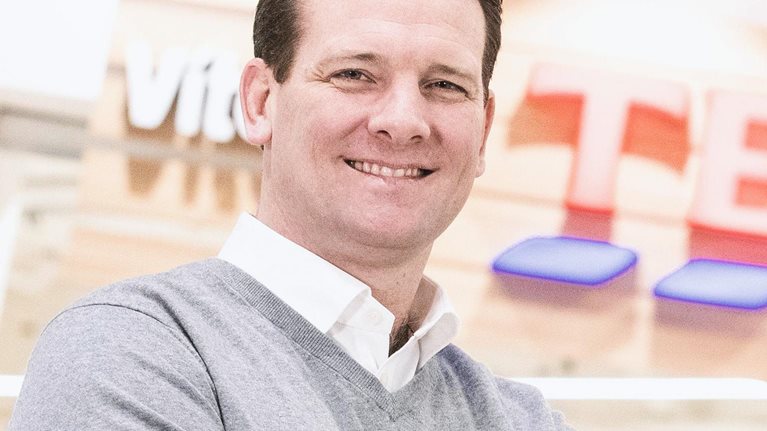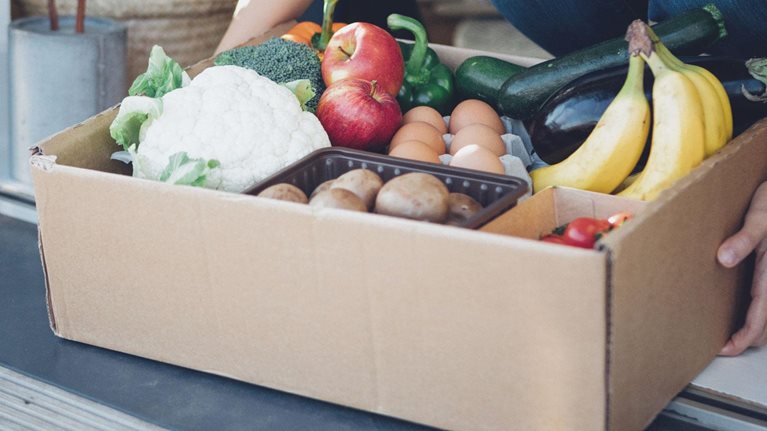This interview conducted on February 2, 2022.
Question: How will market conditions for grocery retail evolve in 2022, in your view, and what does that mean for Ocado?
Melanie Smith: We expect the shift to online to be sustained. In the UK, where there’s been a drop-off in online sales, it’s not because there’s been a drop-off in demand—it’s because the retailers have reduced capacity. During the pandemic, a lot of brick-and-mortar players ramped up store-pick offerings, where shoppers order online and a picker goes to a regular store to fulfill the order. Now, these players are backing off. We can tell from our data that several multichannel players have scaled back their store-pick offering, and a lot of that, in my view, is because the store-pick model isn’t economical when you consider including the fully loaded store and labor costs. The other thing is—you order something on a website or through an app, but the app doesn’t know what’s available in the store, so when the pickers go into the store, they might not find what you ordered. As a consequence, a lot of shoppers are disappointed. But they still like the idea of getting groceries without having to go into a store, and many of them turn to Ocado.
What’s different about us is we don’t pick from stores. Our model relies on what we call CFCs [customer fulfillment centers], our superior fulfillment is the reason we tend to win. Our order accuracy was about 98 percent during COVID-19, and we’re at about 99 percent today, so you basically get what you order. Right now, we have a share of about 1.8 percent of the overall UK grocery market, which is tiny. But we’ve grown faster than any other grocery retailer in the UK over the past two years because our proposition is so much better than everybody else’s, and that’s a big reason why I believe we can get to 5 percent share in the next few years. We have big ambitions, and with the best proposition, there is no reason why we should not aspire to become the number one grocer in the UK over time.
Question: What are some of the other changes you observe, now that the peak of the pandemic seems to be behind us?
Melanie Smith: In 2021, demand was spread out across the day and the week. Everybody was at home every hour of every day, and they were happy to get their deliveries in the afternoons and even late at night. Now that people are starting to go out again, they want their deliveries in the morning. Last year, we also often had peaks on weekends. That is over. People are happy to get their groceries in the morning on Saturdays and Sundays, but in the afternoons, they’re out doing other things. At the same time, basket sizes are declining, although they are still bigger than pre-COVID-19 levels. Behaviors are starting to normalize to some extent, but we’re confident the shift to online is here to stay.
Question: Looking ahead, what do you think will be the most important trends shaping the grocery retail industry in the coming one to three years?
Melanie Smith: This year, I think we’re going to see a lot of competitive behavior around price. Some competitors are taking on discounters—or at least they claim they are, although our data show they are not always as affordable as they claim to be, at least not across the entire assortment. We monitor competitor sites daily, so we know where market pricing is and ensure we are competitive and delivering fair value.
More generally, I think consumers are really going to struggle this year, particularly in the UK, when the retail energy price cap comes off and price inflation continues. And although their budgets will be constrained, consumers want health and sustainability. We can win in that space because we have more organic and vegan options than our competitors. The fact that we have a range of more than 50,000 products gives us a lot of flexibility. Our online-only approach means we’re taking cars off the road. Instead of our customers traveling to a brick-and-mortar supermarket, our delivery drivers bring groceries to doorsteps across the nation. And our routes are optimized, bundling together deliveries to the same areas and reducing mileage where possible. The products go from the supplier to our fulfillment center and from the fulfillment center to the customer’s home. In addition, our food waste is the lowest in the industry and up to ten times lower than what some traditional retailers are throwing out. And what little waste we have, we give to food banks to make sure it’s eaten. Let’s say fresh milk comes in with ten days of shelf life. Once it’s down to five days, we give it to a food bank.

Navigating the headwinds: The State of Grocery Retail 2022: Europe
Question: What are your thoughts on instant delivery?
Melanie Smith: It all comes down to basket size and delivery promise. If you have a big enough basket with good gross margins, you can cover the cost of the last mile. With a small basket and a 15-minute delivery promise, there’s just no path to profit. Some of the instant players have very limited assortments, so it’s difficult for their customers to get to a big basket even if they want to. I think there’s going to be a lot of consolidation among the immediacy players. At Ocado Zoom, our express offering, we have an assortment of 10,000 products, and our promise is to deliver ASAP or later the same day, although we normally deliver in half an hour. Our economics are unbeatable, and we have the highest customer satisfaction—measured by NPS [net promoter score]—in the UK. If we have one barrier to consideration, it’s probably that consumers think we’re more expensive than we actually are, so one of our priorities for 2022 is to draw more attention to the good value we are providing.
Question: How do you see the competitive landscape in online grocery evolving in the near future?
Melanie Smith: People talk about lots of things that I think are probably not going to happen. Everybody tells me that Amazon is going to take over fresh. I don’t see that. They are very good at delivering a package that doesn’t need to be cold and that can arrive at any time in a 24-hour window. They’re not as good at delivering 40 items in three temperature regimes in a one-hour window. If they optimized their business to do this, of course they could pull it off, but right now, I just don’t think that’s where they are.
Another trend that people talk about is delivering hot food along with other groceries. I love that idea. I’m from New Zealand, and I love roast chicken. Walk into any supermarket in New Zealand or Australia, pick up a hot chicken and a fresh loaf of bread, and you’re set for dinner. I’d love to be able to pull that off at Ocado, but operationally, it’s a real challenge. How do you deliver a mixed order without the hot food getting cold or the cold food getting hot? We’re good at solving problems, though—so never say never.
Question: We see lots of partnerships happening not only in the UK but also around the world. What is Ocado’s strategy for partnerships?
Melanie Smith: At Ocado Retail, we have a unique ownership structure because we’re jointly owned by Ocado Group and Marks and Spencer [M&S]. We buy all our technology from Ocado Group, and Marks and Spencer is our most important sourcing partner, which our customers love, with M&S products accounting for roughly 30 percent of an average customer basket. In terms of other partners, we have great deals with Daylesford Organic and Natoora, and we’re in the process of bringing in more specialized suppliers. Generally, we look for partners who can contribute unique products to our range while also providing great value to our customers. We want items in shoppers’ baskets that they can’t get anywhere else and that will keep them coming back to shop with us. And again, we can do that because we’ve got a bigger range than almost everybody else. It’s a very interesting role to be in.
Question: What are your thoughts on data as a driver of value creation?
Melanie Smith: When I took over as CEO, Ocado already had the best data in the world, but we were not yet fully exploiting the asset. In the past two years, we have built an entire data business at Ocado, and we now have more clients than the longtime market leader for shopper data. Our data is entirely pure because it’s 100 percent online and logged in. Every other grocer’s data is split across different channels and payment methods. We know so much about our customers—not just what they buy but also what they put in their baskets and take out later, or what they put in three minutes before they finalize their order. We’re also ramping up our capabilities to develop new propositions for advertisers, such as real-time bidding for search terms. Retail media is already an important source of revenue for us, but I think it has the potential to create even more value for shoppers, for suppliers, and for Ocado.
Question: What are some key learnings from Ocado’s online grocery journey?
Melanie Smith: One of the biggest lessons is how different an online-only grocer is from a brick-and-mortar grocer. I talk to a lot of veteran grocers. They know how to run stores, and then they try to figure out how to run an online business by tweaking what they do in the stores. It doesn’t always work. With online, everything is different. In a store, you change your promotions once a week or once every two weeks. We don’t do that. We have different cycles for different types of products. For example, people typically buy washing detergent only once every six weeks, so we only need a six-week promo cycle for that. On the other hand, if we’re having a slow week, we can do a meal deal for the next day, and we can turn that on in five seconds.
A big transition has, of course, been shifting from the Waitrose partnership to establishing the joint venture between Ocado Group and M&S. Not only did this mean completely replacing the Waitrose range with M&S overnight—which was a huge and unparalleled achievement on its own—but it also meant completely rethinking how we approach things and getting more control over our range and buying. Unsurprisingly, the key thing is always being customer focused.
We also have the ability to range our assortment much more than a traditional store, so we can experiment with new products and quickly test what works and what doesn’t. Rather than having to trial a product in 200 stores, we can range it in six CFCs [customer fullfilment centers] and know within a few days if customers like it. We can also figure out which products are in our most loyal customers’ baskets and make sure we are the go-to grocer where customers can buy things they can’t get elsewhere.
As we have scaled Ocado Retail, we continue to improve our economics. We have always had the best pick and delivery economics in the industry. Now that we have scaled, we have built our own buying capability, which has enabled us to lower our prices and still improve our gross margin. We also invested in strengthening our brand, leveraging the scale we now have, to try new marketing approaches based on a rigorous understanding of our target audiences. Ocado Retail is the largest online-only supermarket in the world, and we still have significant opportunities ahead. An example is continually driving more personalization for customers; we have all these levers that you can pull if you’re online. The pace of innovation and the scale of the opportunity are what makes it so exciting. I honestly think I have the best job in UK grocery.

